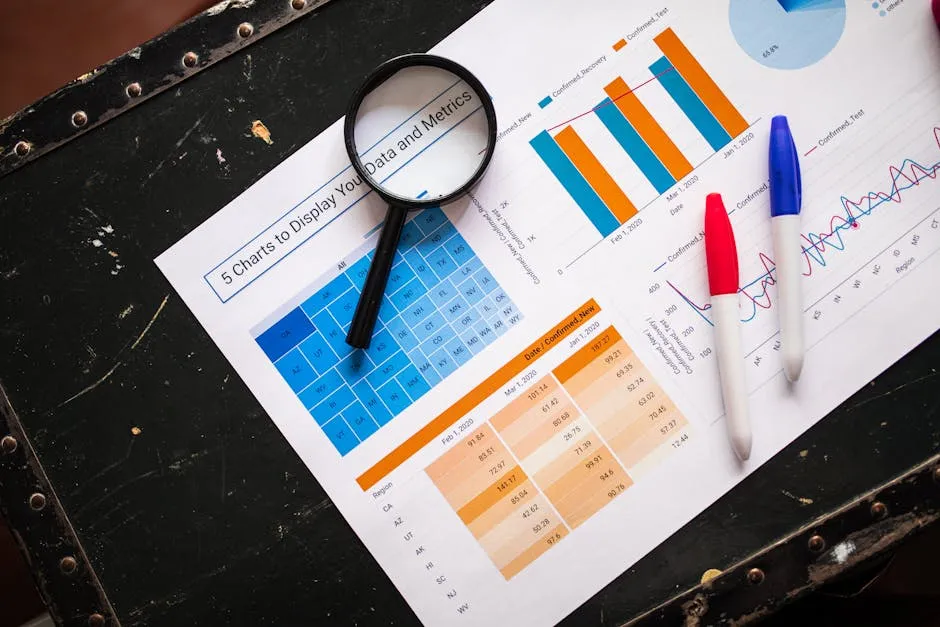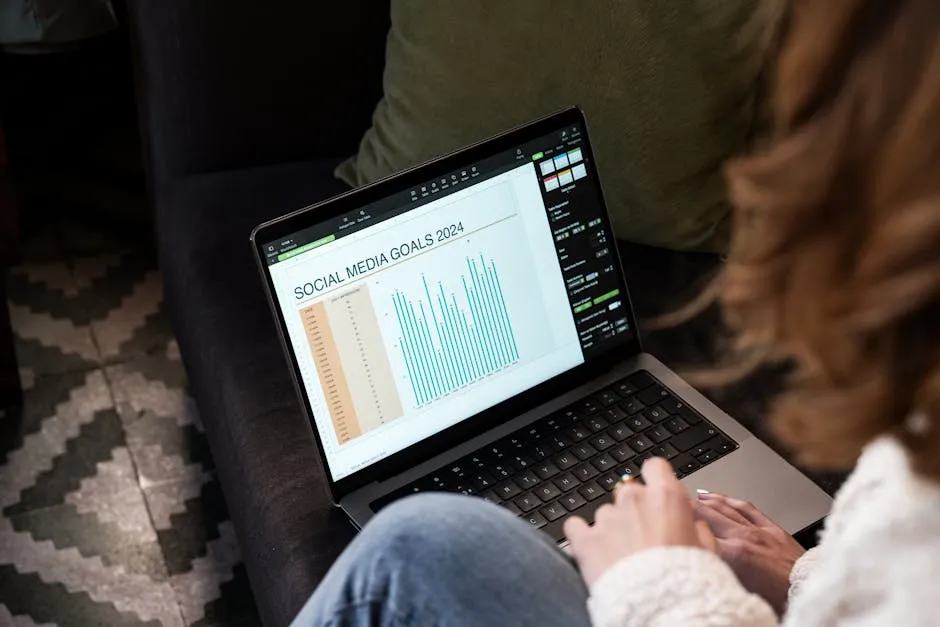Introduction
Statistics plays a crucial role in our understanding of the world. It provides us with the tools to analyze data, make decisions, and uncover trends. Whether it’s determining the effectiveness of a new drug, predicting election outcomes, or understanding consumer behavior, statistics helps us make sense of complex information. From sports to public health, statistics is everywhere!

One key resource in this realm is the textbook Elementary Statistics: Picturing the World by Ron Larson and Betsy Farber. This book stands out for its clear explanations and engaging approach. It demystifies statistical concepts, making them accessible to everyone, from anxious students to seasoned professionals. If you’re looking to dive deeper into statistics, consider pairing it with a handy Scientific Calculator to help with those tricky calculations!
What can you expect from this blog post? We’ll cover the essentials of elementary statistics, including definitions, significance, and the textbook’s goals. We’ll also explore how the authors use real-life examples to make statistics relatable and engaging. Get ready to turn those daunting numbers into delightful insights!
I. Understanding Elementary Statistics
What is Statistics?
Statistics is a branch of mathematics that deals with data collection, analysis, interpretation, and presentation. Simply put, it’s about making sense of numbers. In various fields—such as biology, economics, and sociology—statistics helps us understand patterns and relationships within data.
The significance of statistics cannot be overstated. It guides decision-making in businesses, informs public policy, and drives scientific research. Statistics provides a framework for understanding uncertainty and variability. It allows researchers to draw conclusions from data and make predictions about future events.

In everyday life, we encounter statistics constantly. Weather forecasts, sports analytics, and even social media trends rely on statistical analysis. By understanding statistics, we can better interpret the information that shapes our world. And what better way to keep all that information organized than with a Graphing Paper Notebook? Perfect for sketching out your thoughts and data visualizations!
The Purpose of the Textbook
Elementary Statistics: Picturing the World aims to make the world of statistics less intimidating. The authors focus on clarity and engagement, ensuring that readers grasp essential concepts without feeling overwhelmed. By breaking down complex ideas into manageable parts, Larson and Farber empower students to tackle statistics with confidence.
One standout feature of the textbook is its use of real-life examples. From analyzing sports scores to examining public health data, the authors illustrate how statistics applies to everyday situations. This approach not only enhances understanding but also makes learning fun. To enhance your learning experience, you might want to check out Statistics for Dummies for a little extra help!

The book’s structure supports a step-by-step learning process. Each chapter builds upon previous knowledge, gradually introducing more complex topics. This design helps reinforce learning and ensures students are well-prepared for more advanced statistical concepts down the line.
In summary, Elementary Statistics: Picturing the World is an invaluable resource for anyone looking to understand statistics. Its focus on accessibility, real-world applications, and clear explanations makes it a standout choice for students and educators alike. Let’s dive deeper into the key features and concepts covered in this essential textbook!
II. Key Features of “Elementary Statistics: Picturing the World”
Stepped-Out Instruction
One of the standout features of Elementary Statistics: Picturing the World is its stepped-out instruction. The authors, Ron Larson and Betsy Farber, break down complex concepts into bite-sized pieces. Imagine trying to eat a whole cake in one go—it’s messy! But when you slice it, it becomes manageable. This textbook does exactly that for statistics.

Each chapter begins with a clear objective. Key terms are defined upfront, making it easier to follow along. For instance, when introducing probability, the book starts with basic definitions before diving into more complicated formulas. This method makes learning smoother and less intimidating. And if you’re looking for a way to organize your study materials, a Desk Organizer can work wonders!
Students often struggle with the transition from basic math to statistics. The stepped-out approach provides a safety net. By gradually increasing the difficulty, learners can build confidence. Consider how a student might initially grapple with the concept of standard deviation. With clear examples and gradual explanations, they can understand its significance in no time.
Real-Life Applications
Statistics isn’t just numbers on a page; it’s a tool for understanding our everyday lives. Larson and Farber excel at using real-life applications to illustrate statistical concepts. They embed examples throughout the chapters, showcasing how statistics plays a role in various fields—like sports, healthcare, and even social media trends.

For instance, in discussions about survey methods, the authors might reference a popular poll during a major election. This connection resonates with readers, making the material relatable. Whether it’s analyzing sports statistics or interpreting health data, the real-world examples help students see the relevance of what they’re learning. Want to visualize all that data? A Digital Learning Tool could be just what you need!
Moreover, these examples aren’t just fluff—they enhance comprehension. When students can connect theories to their experiences, they’re more likely to retain information. It’s like watching your favorite show; you remember the plot twists because you’re invested in the characters. Similarly, when students engage with statistical concepts through familiar scenarios, the learning sticks.
Comprehensive Exercises
What’s a textbook without exercises? Elementary Statistics: Picturing the World offers a treasure trove of exercises—over 2,300 in total! These exercises come in various formats, including practice problems, review questions, and in-depth projects.

Each chapter reinforces the concepts introduced. For example, after learning about measures of central tendency, students are prompted to calculate the mean from a given data set. This immediate practice solidifies their understanding. To help with memorization, consider using Flashcards for Study—they’re a great way to reinforce key concepts!
The exercises also cater to different learning styles. Some students might prefer traditional problems, while others might enjoy group projects that encourage collaboration. This variety ensures that every learner has a chance to succeed. Plus, with detailed solutions provided, students can check their work and learn from their mistakes.
Technology Integration
In our tech-savvy world, why should statistics be any different? The textbook integrates various digital resources, including StatCrunch and MyLab Statistics. These tools enhance the learning experience, making statistics more interactive.

StatCrunch, for instance, allows students to visualize data. Instead of merely calculating probabilities, they can see graphs and charts come to life. This visual representation helps demystify complex concepts. Additionally, MyLab Statistics offers personalized learning options, allowing students to progress at their own pace. If you’re looking for an excellent reference, check out Probability: For the Enthusiastic Beginner to deepen your understanding!
The integration of technology doesn’t stop there. Each chapter features “Tech Tips” that guide students in using software effectively. From creating spreadsheets to conducting simulations, these tips prepare students for real-world applications. By embracing technology, the textbook helps students become proficient in using modern statistical tools—skills that are invaluable in today’s job market.

In summary, Elementary Statistics: Picturing the World is more than just a textbook; it’s a comprehensive resource that combines clear instruction, relatable examples, diverse exercises, and cutting-edge technology. These features work together to create an engaging learning experience, making statistics accessible and enjoyable for all.
III. Core Topics Covered in the Textbook
Descriptive Statistics
Overview of Descriptive Statistics
Descriptive statistics is the art of summarizing data. It paints a clear picture of datasets, making the complex seem simple. By summarizing large amounts of data, descriptive statistics allows us to understand trends, patterns, and outliers. Think of it as the highlight reel of statistics! Instead of sifting through endless numbers, we get to see the most important parts.

In practical terms, descriptive statistics includes tools that help us describe our data—like a tour guide leading us through a museum of numbers. It’s significant because it lays the groundwork for further analysis. Understanding the basics lets us interpret data effectively and provides insights into what’s happening in the world around us. To keep your notes organized, you might want to invest in a Writing Journal for your thoughts!
Key Concepts and Techniques
Dive into the key concepts of descriptive statistics, and what do we encounter? Frequency distributions! This technique organizes data into manageable categories. Picture a survey of favorite ice cream flavors. Instead of listing each response, we can show how many people prefer chocolate, vanilla, or strawberry. This summary helps visualize preferences at a glance.

Next up, measures of central tendency—mean, median, and mode. The mean is the average, found by adding up values and dividing by the count. The median? It’s the middle value when data is sorted. And the mode is simply the most frequently occurring value. Each measure offers a unique insight. They’re like the three amigos of data analysis!
But wait, there’s more! Measures of variation, such as range and standard deviation, come into play. The range shows us the spread between the highest and lowest values, while standard deviation tells us how much data varies from the mean. This information can reveal whether our data is tightly clustered or widely scattered.
Understanding these key concepts equips students with the tools needed to summarize and interpret data effectively. With these foundational elements, learners can confidently analyze any dataset they encounter. For those looking to enhance their study habits, a Study Planner might be the perfect addition!
Probability and Probability Distributions
Understanding Probability
Probability is the backbone of statistics and speaks to likelihood. It answers questions like: What are the chances of winning the lottery? Understanding basic concepts of probability helps us make informed predictions. Probability helps us navigate uncertainty.

At its core, probability is defined as the number of favorable outcomes divided by the total possible outcomes. Imagine flipping a coin. There are two possible outcomes—heads or tails. The probability of landing heads is 1 out of 2, or 50%. This simple calculation has profound implications, influencing decisions in fields like finance, healthcare, and even sports!
Key Distributions
Now, let’s discuss two key probability distributions: binomial and normal distributions. The binomial distribution deals with scenarios that have two possible outcomes, like success or failure. For example, when flipping a coin multiple times, we can calculate the probability of getting a certain number of heads.
In contrast, the normal distribution is the classic bell curve. It describes how data points are distributed around the mean. Many real-world phenomena, like heights or test scores, tend to cluster around the average. The beauty of the normal distribution lies in its predictability. It allows us to make educated guesses about data.

Understanding these distributions empowers students to analyze data more effectively. They can apply these concepts not just in the classroom, but also in making informed decisions in everyday life. Need a quick reference? Check out Math Reference Cards to keep handy!
Statistical Inference
Confidence Intervals
Confidence intervals offer a powerful way to estimate population parameters. Imagine you want to know the average height of all students in a school. Instead of measuring every single student, you can take a sample. A confidence interval provides a range of values, indicating where the true average likely falls.

For example, if we calculate a confidence interval for the average height to be between 5’4” and 5’6”, we can say with a certain level of confidence that the true average height lies within this range. This approach helps researchers make informed conclusions based on a limited dataset.
Interpreting confidence intervals is crucial in research. They signify variability and uncertainty, helping researchers avoid overgeneralizations. These intervals guide decision-making in fields such as healthcare and social sciences, making them indispensable tools for statisticians. After all that study, don’t forget to stay energized—consider a Healthy Snacks Variety Pack!
Hypothesis Testing
Hypothesis testing is like a courtroom trial for data. It helps determine if there’s enough evidence to support a claim. We start with a null hypothesis, which states there’s no effect or difference. The alternative hypothesis, on the other hand, suggests there is an effect.

Through statistical tests, we analyze data to see if we can reject the null hypothesis. This process is vital in research, as it helps validate findings. For example, if a new medication shows a statistically significant improvement in patient outcomes, researchers can confidently advocate for its use.
Understanding hypothesis testing equips students with critical thinking skills. They learn to analyze data rigorously and draw valid conclusions, a key aspect of research in any field. Overall, it’s a foundational concept that enhances their statistical toolkit. To keep those tools sharp, consider using Noise-Cancelling Headphones to help you focus while studying!
Correlation and Regression
Understanding Relationships
Correlation is a statistical measure that helps us understand the relationship between two variables. Think of it as a dance between numbers! The correlation coefficient, which ranges from -1 to 1, quantifies this relationship. A coefficient close to 1 indicates a strong positive correlation, meaning as one variable increases, so does the other. Conversely, a coefficient near -1 suggests a strong negative correlation, where one variable increases while the other decreases. A coefficient of 0? Well, that’s like two left feet—no correlation at all!

Interpreting these coefficients is vital. For instance, a correlation of 0.85 between exercise and weight loss suggests a strong positive link. But remember, correlation does not imply causation! Just because two things move together doesn’t mean one causes the other. They could be influenced by a third factor, like diet. So, while correlation is a helpful tool, it’s essential to approach it with a sprinkle of skepticism!
Regression Analysis
Regression analysis takes the relationship a step further, allowing us to make predictions. Linear regression models the relationship between two variables by fitting a straight line to the data points. This line, often called the “line of best fit,” helps predict outcomes based on known values. For instance, if we have data on study hours and exam scores, we can use regression to estimate a student’s score based on their study time.
Applications of regression analysis are vast. In business, companies use it to forecast sales based on marketing spend. In healthcare, researchers might predict patient outcomes based on treatment variables. The beauty of regression lies in its ability to quantify relationships and provide actionable insights, making it a powerful tool in the statistician’s toolkit. Want to enhance your home study setup? A Desk Chair Cushion can make all the difference!
Chi-Square Tests and Nonparametric Tests
Chi-Square Tests
Chi-square tests are essential for analyzing categorical data. They help determine if there’s a significant association between variables in a contingency table. For instance, if we want to know if gender affects voting preference, a chi-square test can reveal whether the observed frequencies differ significantly from what we’d expect by chance.

Goodness-of-fit tests within the chi-square family measure how well observed data fit an expected distribution. This is crucial in fields like market research, where understanding customer preferences can guide product development. By assessing these relationships, chi-square tests provide valuable insights into categorical data, helping us make informed decisions. If you’re looking to enhance your analytical skills, consider picking up a Mindfulness Coloring Book—it’s a great way to relax while you study!
Nonparametric Tests
Nonparametric tests are the unsung heroes of statistics. They come in handy when data doesn’t meet the assumptions of traditional parametric tests, like normal distribution. When you have small sample sizes or ordinal data, nonparametric tests offer a robust alternative.
Common examples include the Wilcoxon signed-rank test and the Kruskal-Wallis test. These tests assess differences between groups without making strict assumptions about the underlying population distributions. Their relevance shines in real-world scenarios, such as comparing customer satisfaction ratings across different service centers. By using nonparametric tests, researchers can glean insights without being bogged down by data assumptions, making statistics accessible and effective. And if you need to jot down your findings, consider using Colorful Sticky Notes to keep your thoughts organized!
FAQs
What is the level of difficulty of the textbook?
Elementary Statistics: Picturing the World caters to a wide audience. It’s user-friendly for beginners while still offering depth for advanced learners. The textbook is structured to build knowledge gradually. Each chapter introduces new concepts, ensuring no one gets lost in the numbers.
Are there any prerequisites for studying elementary statistics?
You don’t need a PhD in mathematics to tackle this textbook! However, a basic understanding of algebra can be beneficial. Familiarity with graphs and simple equations will help you navigate the content more smoothly. If you’re new to statistics, don’t worry; the book is designed to guide you step-by-step.
How can I access Elementary Statistics: Picturing the World?
Getting your hands on Elementary Statistics: Picturing the World is a breeze! You can purchase it online through retailers like Amazon or Pearson. Rental options are also available for those who want to save some cash. eTextbook versions are perfect for on-the-go learners who prefer digital formats. Plus, platforms like MyLab offer access to additional resources that complement the textbook.
Can this textbook be used for online learning?
Absolutely! The textbook is well-suited for online courses and self-study. It includes various resources, like practice problems and interactive exercises, that enhance the learning experience. The supplemental materials available through MyLab Statistics further enrich your understanding. Whether you’re studying independently or as part of a course, this textbook has everything you need to succeed. So, buckle up and get ready for a fun ride through the world of statistics!
Please let us know what you think about our content by leaving a comment down below!
If you’re interested in learning more about the foundational aspects of statistics, check out this introduction to statistical learning with Python.
Thank you for reading till here 🙂
All images from Pexels




